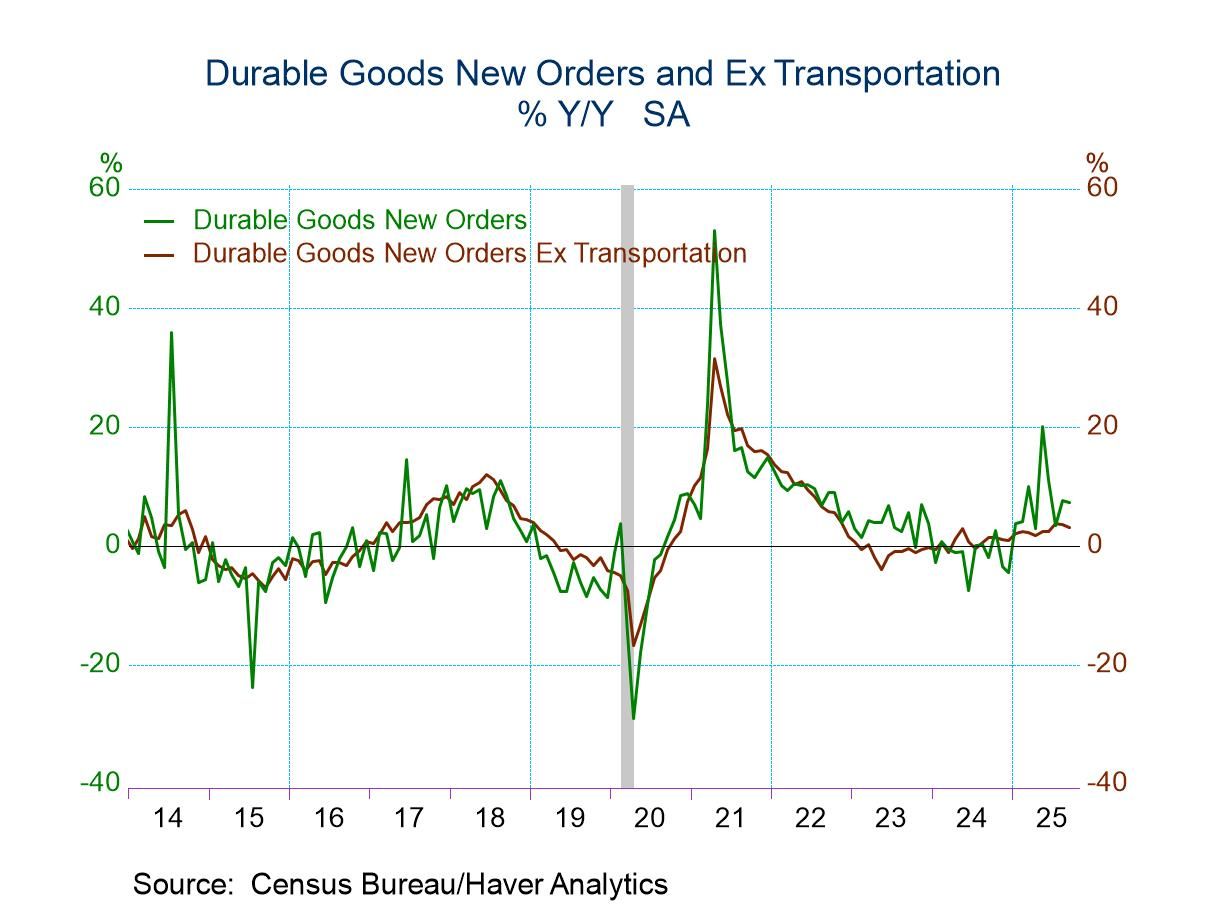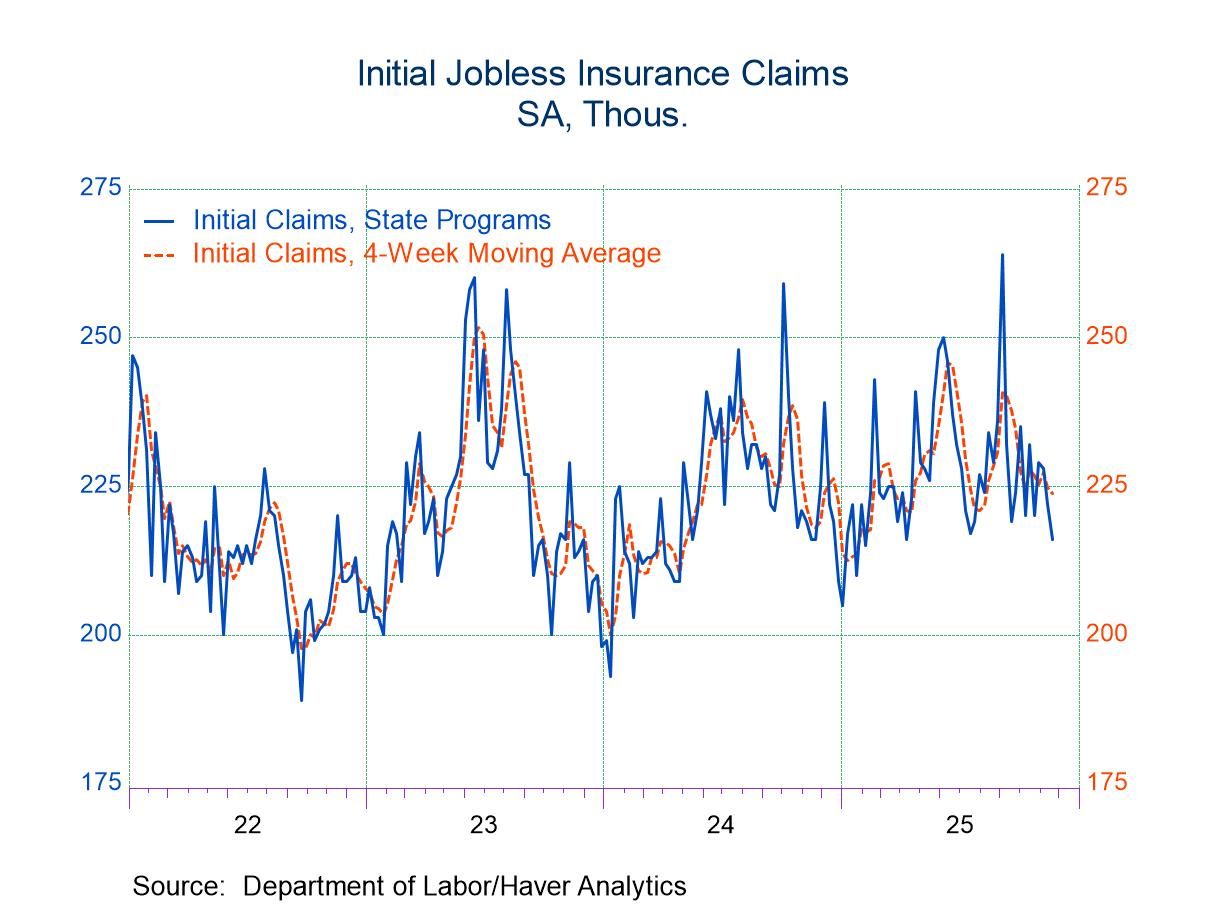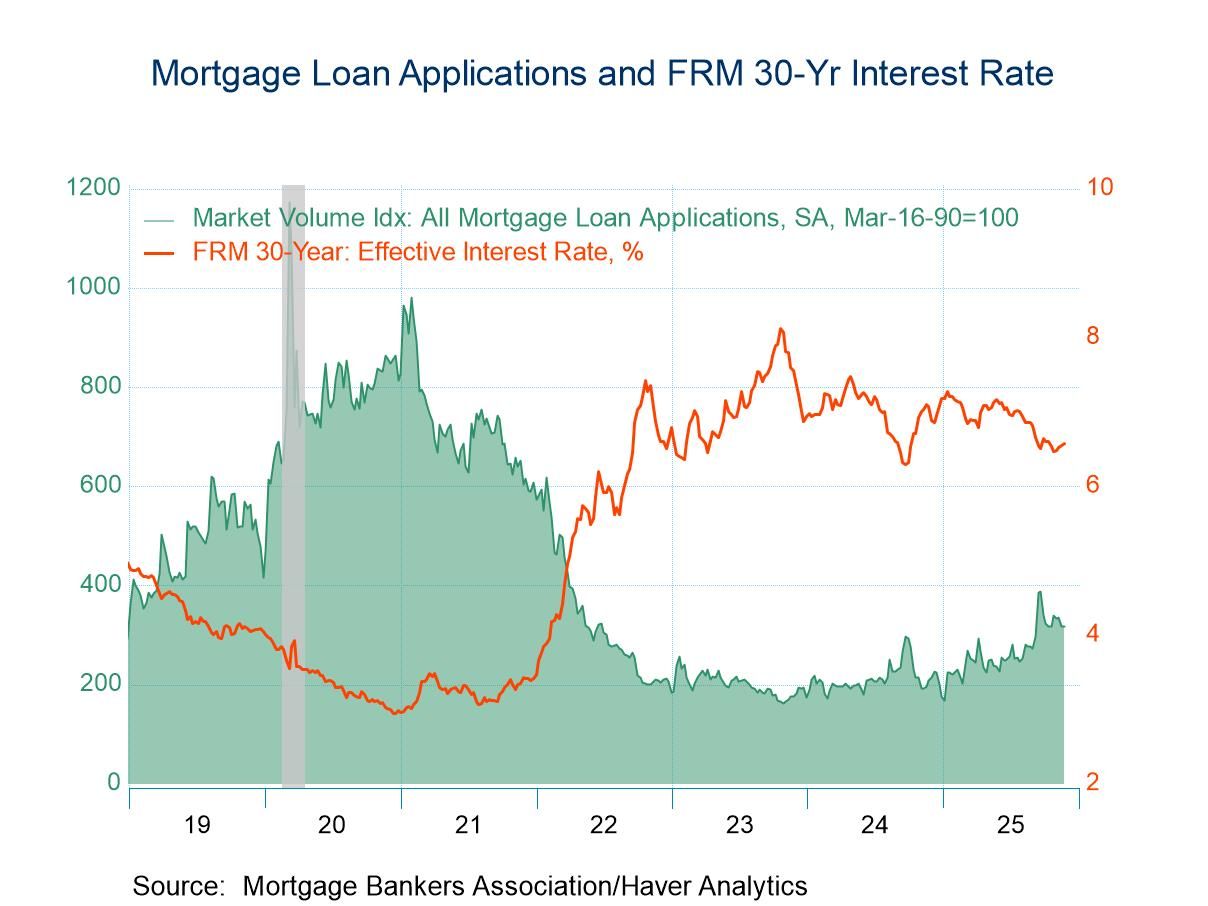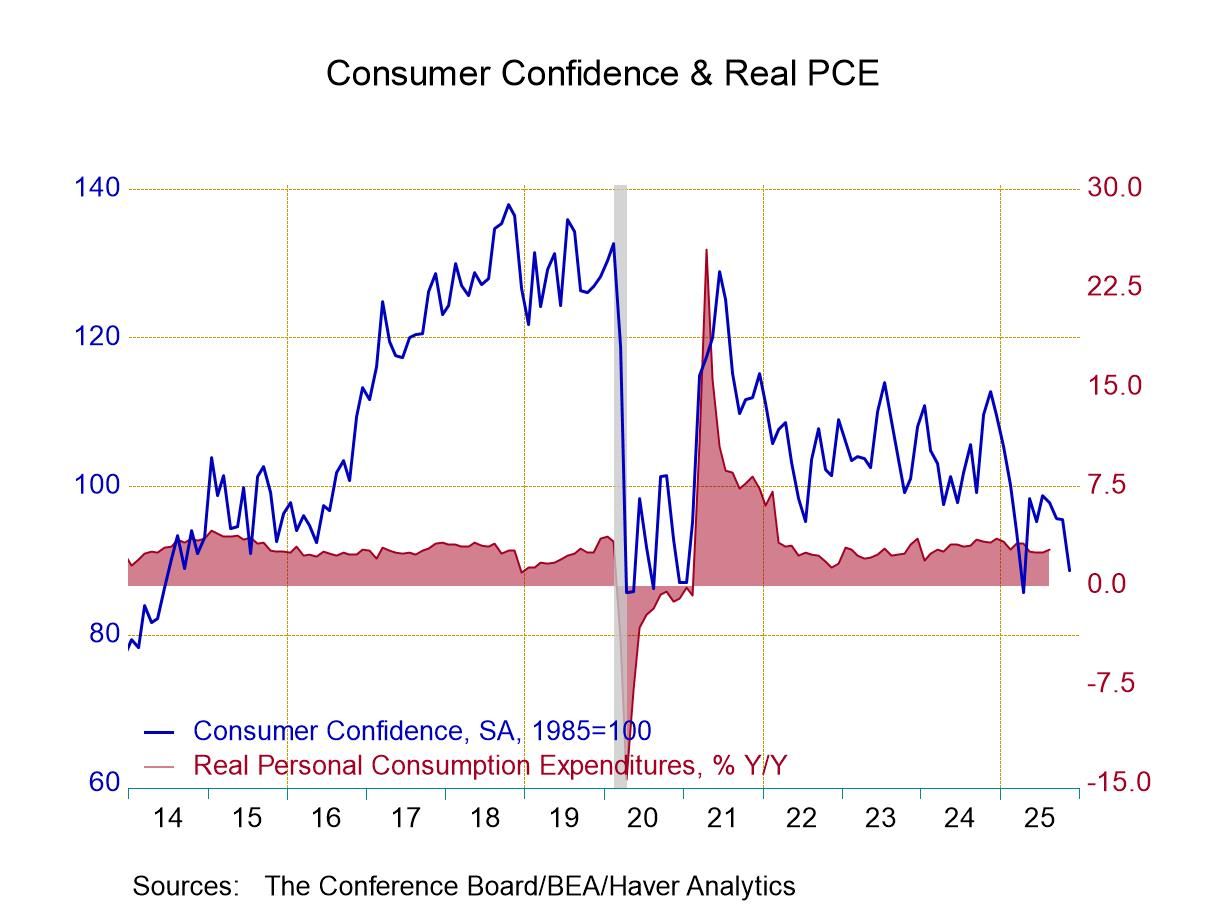U.S. Initial Jobless Claims Rise in Latest Week
Summary
- Initial claims for unemployment insurance rose 14,000 in the May 24 week.
- Total beneficiaries rose by 26,000 in the May 17 week to the highest level since November 13, 2021.
- The insured unemployment rate ticked up to 1.3%.


Initial claims for unemployment insurance rose 14,000 in the week ended May 24 to 240,000, seasonally adjusted. The Action Economics Forecast Survey had expected 230,000. The previous week’s actual count was revised down by 1,000 to 226,000, from 227,000 reported initially. The 4-week moving average was 230,750, a decrease of 250 from the previous week's revised average. The previous week's average was revised down by 500 to 231,000.
The total number of unemployment insurance beneficiaries – also known as “continuing claims” – in the week ended May 17 was 1.919 million, up 26,000 from the prior week’s 1.893 million; that earlier amount was revised down by 10,000. The week of May 17 level for insured unemployment was the highest since November 13, 2021, when it was 1.970 million. The 4-week moving average was 1.890 million, an increase of 2,750 from the previous week's unrevised average of 1.888 million. This is the highest level for this average since November 27, 2021, when it was 1.924 million.
The insured unemployment rate, that is, the number of beneficiaries as a percentage of covered employment, was 1.3% in the May 17 week, following three consecutive weeks at 1.2%.
Economic conditions vary widely across states and territories. In the week ended May 10, the highest unemployment rates were in New Jersey (2.24%), California (2.15%), Washington (2.09%), Rhode Island (1.89%), Massachusetts (1.82%). The lowest rates were in South Dakota (0.26%), Florida (0.36%), Alabama (0.43%), Nebraska (0.45%), and Tennessee and North Carolina (both at 0.48%). Rates in other notable states include Illinois (1.61%), New York (1.59%), Pennsylvania (1.44%) and Texas (1.11%). These state data are not seasonally adjusted.
Data on weekly unemployment claims are from the Department of Labor itself, not the Bureau of Labor Statistics. They begin in 1967 and are contained in Haver’s WEEKLY database and summarized monthly in USECON. Data for individual states are in REGIONW back to December 1986. The expectations figure is from the Action Economics Forecast Survey in the AS1REPNA database.
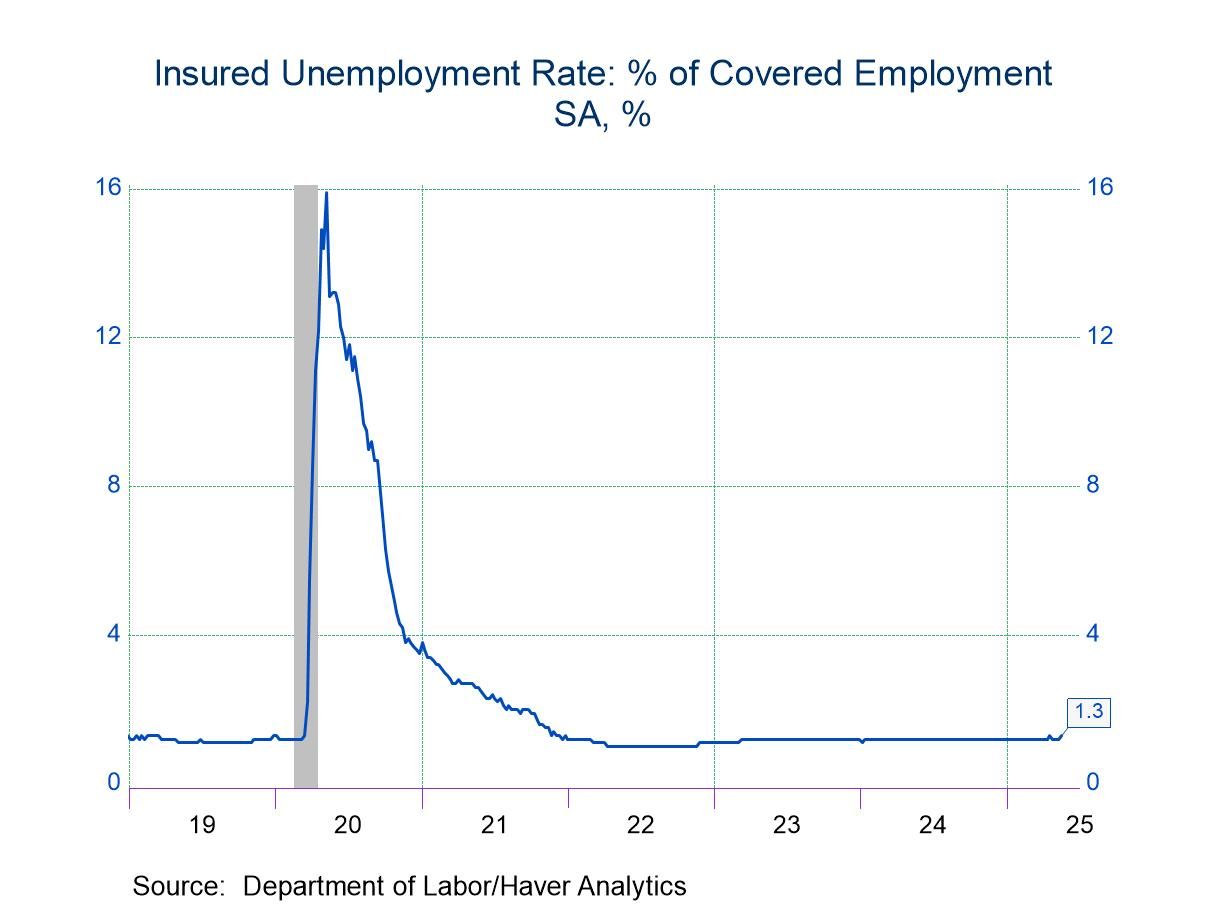

Kathleen Stephansen, CBE
AuthorMore in Author Profile »Kathleen Stephansen is a Senior Economist for Haver Analytics and an Independent Trustee for the EQAT/VIP/1290 Trust Funds, encompassing the US mutual funds sponsored by the Equitable Life Insurance Company. She is a former Chief Economist of Huawei Technologies USA, Senior Economic Advisor to the Boston Consulting Group, Chief Economist of the American International Group (AIG) and AIG Asset Management’s Senior Strategist and Global Head of Sovereign Research. Prior to joining AIG in 2010, Kathleen held various positions as Chief Economist or Head of Global Research at Aladdin Capital Holdings, Credit Suisse and Donaldson, Lufkin and Jenrette Securities Corporation.
Kathleen serves on the boards of the Global Interdependence Center (GIC), as Vice-Chair of the GIC College of Central Bankers, is the Treasurer for Economists for Peace and Security (EPS) and is a former board member of the National Association of Business Economics (NABE). She is a member of Chatham House and the Economic Club of New York. She holds an undergraduate degree in economics from the Universite Catholique de Louvain and graduate degrees in economics from the University of New Hampshire (MA) and the London School of Economics (PhD abd).



